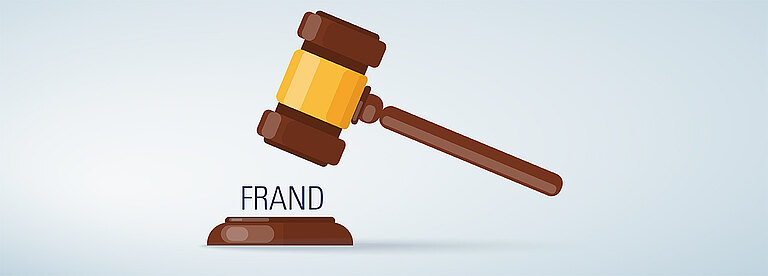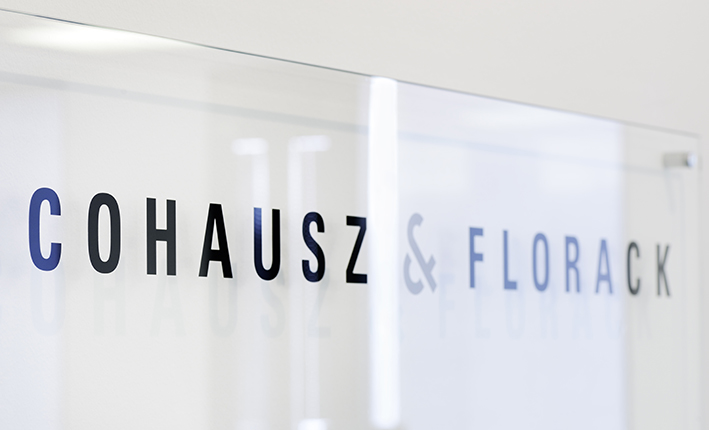Patent pools promote innovation as the licensors receive a return on the investment in the patented technology based on the collected royalties. Competition on the product market is induced as the licensees obtain fair access to the licensed technology.
The classic playing field for patent pools are pools of patents essential for the implementation of a standardised technology – so-called ‘standard essential patents’ (SEPs). Standardised technologies are typically developed by innovative companies and research institutions. The standardisation process is organised by standard developing organisations (SDOs). Standardisation is not a governmental operation, but is driven by the contribution of the innovative organisations. In today’s hyper-connected era, interconnectivity and standardised technologies are crucial. The revenues generated by products compliant with standardised technologies are counted in the trillions and continue to grow.
At the same time, listing the characteristics of a perfect patent pool is far from an impossible task. It should provide a fair return on the investments in research and development of the patent owner. The royalties should be adequate for the licensed technology, and no patent owner or licensee should be discriminated. The answer of the legal sector to these requirements is that a patent pool should be FRAND.
Under the microscope, patent pools are vulnerable to certain deficiencies.
Irrelevant declarations – essential and FRAND
To provide a fair return on the investments in research and development of the patent owner and to determine adequate royalties for the licensed technology, it is vital to determine the patents that are essential to implement the licensed technology – the SEPs.
An essential patent is used when the standard is implemented and accordingly the determination of essential patents requires an infringement analysis, which is an intricate and expensive task.
The new technologies involved in 5G mobile communication make use of tens of thousands of patents. But there is not the money or capacity available to determine which of these patents are indeed essential. Without knowing how many patents are essential and for which part of the technology they are necessary, it is difficult to price royalties. The distribution of royalties without knowing which patent owner owns which or how many patents, and in which part of the technology, makes the distribution of royalties impossible.
Technologies such as 5G do not cover one product category, but multiple product categories. It is reasonable to believe that a fair royalty for one category (eg, a mobile handset) is not identical to a fair royalty for another category (eg, an Internet of Things temperature sensor).
The present best answer is so-called ‘selfdeclaration’ by the patent owners, typically initiated by the SDOs. The subject matter of such a self-declaration is a statement from the patent owner that certain patents are essential to implement a standard. The present understanding is that more than 20,000 patent families have been self-declared as essential for the 5G standard. It is also well understood that this number includes a substantial amount of ‘over declaration’ (ie, patents that are factually not essential to the implementation of 5G technology). ‘Under declaration’ (ie, patents that have been not declared essential by the patent owners unless they are essential) casts a dark shadow in this game, as patent owners might strategically not self-declare all essential patents for many reasons.
Both licensors and licensees are sceptical when it comes to self-declaration. Pricing or licensing based on unreliable self-declarations may result in a non-starter and may even impede standardised technologies. The licensing of a non-essential patent under an SEP joint-licensing programme is non-FRAND.
There are a number of available solutions other than the extrapolation of essentiality evaluations and filling evaluation gaps parallel to the launch of a standardised technology, but they are not generally established yet.
FRAND declarations are another species with incomprehensible relevance. A FRAND declaration is a declaration of a patent owner to grant a FRAND licence to all prospective users of its SEP patents. This type of declaration is typically organised by SDOs.
Courts in Germany are disinterested as to whether a patent owner has declared its willingness to license its SEPs on a FRAND basis. As long as the patent is an SEP providing market dominance (MDSEP) – that is, with the potential to block the implementation of a standardised technology – there is a very high likelihood that an injunction claim based on such an MDSEP will not be granted unless a FRAND licence is offered. FRAND declaration is redundant in this case.
Only where an SEP does not provide market dominance may a FRAND declaration be binding for the patent owner. Accordingly, a FRAND declaration may be relevant in cases where the technology is not market dominant (ie, optional). This is usually a scenario of minor relevance.
FRAND guidelines
It is advisable not go to court as an MDSEP owner before having established a reasonable number of licensing contracts. FRAND calculation is not the business of the courts – at least not in Germany. A FRAND royalty will have to be established by the market, through negotiations between licensors and licensees. Such negotiations are, in many cases, facilitated by specialised licensing organisations.
A defendant should have in mind that asking for unequal treatment compared to other FRAND licensees will prove a difficult task. Germany is a rich jurisdiction and the leading venue for SEP cases in this respect.
Requesting a licence for a German subsidiary while worldwide licensing of affiliated groups is being established has been rejected. Bilateral licensing in cases of established pool licences has been litigated and found to be unfair. Asking for region-specific royalties where worldwide uniform royalties are paid by the vast majority of market participants is likely to be a futile request.
More recently the German Federal Court of Justice has confirmed that a company that is in a dominant position as a result of its ownership of MDSEPs is not, in principle, prevented from protecting its own business interests by adapting FRAND conditions if the reasonable business interests are attacked. It must be able to react reasonably to such an attack, provided that such conduct is not aimed at strengthening and abusing a dominant position. This decision further strengthens the position of SEP owners: they have a relatively large margin of discretion in determining FRAND fees with regard to different licensees and do not have to accept inadequate offers.
Non-FRAND – when raising a FRAND defence makes sense
By establishing a joint licensing programme pooling all patent essentials for the implementation of a standardised technology, a one-stop shop is provided. Every licensee via such one-stop shop obtains all required licences for a product implementing the standard. Transaction costs are thereby substantially reduced, and competition is facilitated on the product market for small and medium-sized companies. This onestop shop is compromised by split joint-licensing efforts relating to one single standard. Raising a FRAND defence in a multi-stop situation may make sense under various aspects.
Ideally, a one-stop shop patent pool is established at the very beginning of a standardised technology. Implementers of this technology will then have the necessary security for long-term planning and investing in new products. In case no such patent pool is available, the standardised technology may not launch at all.
There is reason to believe that in multistop situations it is problematic to play on the expectation of the licence market that the first joint licensing programme will become established as a one-stop shop. Establishing a further joint licensing programme in such a situation is unlikely to be considered FRAND. The licensees will find themselves trapped between the long-term planning and investments made on one hand, and a new matter of expense on the other. Raising a FRAND defence in this situation seems to make sense.
A FRAND defence will also make sense in multi-stop situations where the royalty rates in relation to the licence scope differ substantially. While there is little doubt that there is not a unique FRAND price tag but a corridor for royalties to be considered FRAND, there is also little doubt that there are limits to such a corridor. In case those limits are exceeded in a multi-stop situation, this may provide reasons to prevent the patent owner from enforcing an injunction claim.
Multi-stop situations can be further complicated where there is an overlap in the patent coverage in at least two of the joint licensing programmes. This peculiarity may impose un-FRAND obligations on the licensees where the joint licensing programmes do not enable a solution convenient for the licensees to avoid double-dipping.
Download article >
This article first appeared in Global Patent Litigation Guide: Helping businesses navigate the new normal 2021, a supplement to IAM, published by Law Business Research - IP Division. To view the guide in full, please go to www.IAM-media.com.
Picture credits: Andrey Popov – AdobeStock






